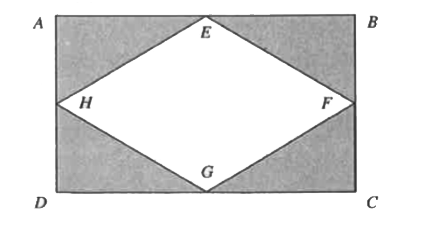In shade plants the ratio of chl a:chl b is
4.5:1
1.4:1
0.7:1
5.5:1
The correct Answer is:B
To determine the ratio of chlorophyll A to chlorophyll B in shade plants, we can follow these steps:
1. Understand the Role of Chlorophyll:
- Chlorophyll A is the primary photosynthetic pigment, while chlorophyll B acts as an accessory pigment that helps in capturing light energy and transferring it to chlorophyll A.
2. Identify the Environment:
- Shade plants are adapted to grow in low light conditions. This affects the chlorophyll composition in these plants.
3. Know the Typical Ratio:
- In general, the ratio of chlorophyll A to chlorophyll B in most plants is approximately 3:1.
4. Adjust for Shade Plants:
- In shade plants, this ratio changes due to their adaptation to lower light levels. Research indicates that the ratio of chlorophyll A to chlorophyll B in shade plants is approximately 1.4:1.
5. Select the Correct Option:
- From the given options (4.1:1, 1.4:1, 0.7:1, 5.5:1), the correct answer is 1.4:1.
Final Answer:
The ratio of chlorophyll A to chlorophyll B in shade plants is 1.4:1.
---
- Chlorophyll A is the primary photosynthetic pigment, while chlorophyll B acts as an accessory pigment that helps in capturing light energy and transferring it to chlorophyll A.
- Shade plants are adapted to grow in low light conditions. This affects the chlorophyll composition in these plants.
- In general, the ratio of chlorophyll A to chlorophyll B in most plants is approximately 3:1.
- In shade plants, this ratio changes due to their adaptation to lower light levels. Research indicates that the ratio of chlorophyll A to chlorophyll B in shade plants is approximately 1.4:1.
- From the given options (4.1:1, 1.4:1, 0.7:1, 5.5:1), the correct answer is 1.4:1.
The ratio of chlorophyll A to chlorophyll B in shade plants is 1.4:1.
Topper's Solved these Questions
- Plant Growth and MovementsBOOK - DINESH PUBLICATION ENGLISHCHAPTER - Plant Growth and MovementsEXERCISE - CYG
20 Videos
- PLANT BREEDING AND DISEASE CONTROLBOOK - DINESH PUBLICATION ENGLISHCHAPTER - PLANT BREEDING AND DISEASE CONTROLEXERCISE - Check your Grasp
10 Videos
- PLATYHELMINTHES-THE FLAT WORMSBOOK - DINESH PUBLICATION ENGLISHCHAPTER - PLATYHELMINTHES-THE FLAT WORMSEXERCISE - check your grasp
9 Videos
Similar Questions
Knowledge Check
In the figure, ABCD is a rectangle and points E, F, G and H are midpoints of its sides. What is the ratio of the area of the shaded region to the area of the un-shaded region in the rectangle?
 A1:1B1:2C2:1D1:3
A1:1B1:2C2:1D1:3In pea plants, yellow seeds are dominant to green. If a heterozygous yellow seeded plant is crossed with a green-seeded plant, what ratio of yellow and green seed plants would you expect in F1 generation?
A9:1B3:1C1:3D50:50In PS I, the reaction centre chl a has absorption maxima at____whereas in PS II, the reaction centre Chl a has absorption maxima at ___
A700nm ,680nmB680nm,700nmC400nm,500nmD700nm,800nm
A student collected an alga and found that its cells contain both chl a and chl d as well as phycoerythrin but no chl b and flagella. The alga bolongs to
View SolutionIn pea plants, yellow seeds are dominant to green. If a heterozygous yellow seeded plant is crossed with a green seeded plant, what ratio of yellow and green seeded plants would you expect in F1-generation?
View SolutionIf a homozygous tall plant is crossed with a dwarf plant, what shall be the ratio of plants in offsprings :-
View SolutionIf the ratio of A to B is 3:5 and the ratio of B to C is 2:7, what is the ratio of A to C?
View SolutionA dwarf pea plant was treated with gibberellic acid. It grows as a pure tall pea plant. If the treated plant is crossed with a pure tall plant, the phenotypic ratio of F1 is likely to:
View Solution
